20 Delightful Indonesian Desserts That Captivate Every Palate
Indonesian desserts tantalize taste buds with their vibrant colors and intricate flavors that reflect the nation's rich culinary heritage.
Sweet treats from this archipelago blend traditional techniques with exotic ingredients, creating unique gastronomic experiences.
Cultural influences merge seamlessly in these delectable creations, showcasing regional diversity and generations of culinary innovation.
Each dessert tells a story of community, celebration, and deeply rooted traditions passed through families.
Ingredients like coconut, palm sugar, and tropical fruits transform simple recipes into extraordinary sensory journeys.
Complex textures and harmonious flavor profiles distinguish these desserts from typical Western confections.
Regional variations highlight local agricultural bounty and time-honored cooking methods.
The following 20 popular Indonesian desserts will transport you through a delightful landscape of sweet sensations:
Popular Indonesian Desserts for a Sweet Adventure
Tropical fruits and coconut turn desserts in Indonesia into irresistible treats. Sweets here are colorful, chewy, and full of joy.
Pisang Goreng
Pisang goreng are crispy Indonesian banana fritters that transform humble bananas into a golden, irresistible street food snack.
Sweet ripe bananas get dipped in light flour batter before deep-frying to create a crunchy exterior with a soft, warm interior.
Street vendors across Indonesia sell these popular fritters, with regional variations like godoh biu in Bali and gedhang goreng in Java.
Indonesians enjoy pisang goreng as an affordable, quick snack available at nearly every street corner.
Different batter recipes include rice flour, wheat flour, or a mix of both for extra crispiness.
Some versions get dusted with powdered sugar or served with chocolate or caramel drizzles.
Regional styles range from thin sliced bananas to whole fruit fritters.
Klepon
Klepon are Indonesian sweet rice balls bursting with molten palm sugar inside a chewy glutinous rice flour shell.
Green-tinted pandan leaves traditionally color the vibrant exterior, creating a visually appealing treat.
Desiccated coconut coats each rice ball, adding texture and complementary flavor.
Javanese cuisine claims these treats as a signature dessert, though similar versions exist across Sulawesi, Sumatra, and Malaysia.
Chinese culinary influence contributes to the recipe's complexity.
Coconut coating provides a crisp contrast to the soft rice dough.
Small yet satisfying, these bite-sized desserts deliver a surprising burst of caramel-like sweetness when eaten.
Dadar Gulung
Dadar gulung are Indonesian green pancake rolls bursting with sweet coconut filling and cultural significance.
Pandan leaves naturally color the thin rice flour crepe a vivid emerald green, creating a visually striking dessert.
Grated coconut mixed with dark palm sugar (gula melaka) fills each delicate roll, delivering a rich and complex flavor profile.
Home cooks across Indonesia craft these treats using traditional techniques passed through generations.
Malaysians, Singaporeans, and Sri Lankans also enjoy similar variations of this beloved sweet.
Crepe batter traditionally incorporates pandan leaf extract, though modern versions often use green food coloring.
Palm sugar adds depth and caramel-like sweetness to the coconut mixture.
Baking transforms the ingredients into a compact, flavorful dessert perfect for celebrations or casual snacking.
Kue Putu
Kue putu are steamed green cakes crafted from glutinous rice flour and pandan leaves, originating in Indonesia's street food culture.
Bamboo tubes traditionally serve as the cooking vessel for these sweet treats.
Palm sugar fills the cake's center, creating a rich inner layer.
Street vendors frequently sell these compact snacks across Southeast Asia.
Coconut flakes dust the exterior after steaming, adding texture and flavor.
Malaysian and Philippine cuisines share similar versions of this rice-based dessert.
Some food historians link kue putu to puttu, a comparable Indian snack.
Odading
Odading are deep-fried Indonesian bread rolls bursting with fluffy texture and crispy exterior, crafted from simple flour, yeast, eggs, salt, and sugar mixture.
Street vendors and school cafeterias across Indonesia frequently sell these golden-brown snacks that transform basic ingredients into irresistible treats.
Dough rises until doubled in volume before being carefully dropped into hot oil for frying.
Skilled hands shape each piece to ensure perfect consistency.
Sesame seeds often garnish the surface for extra crunch and flavor.
Texture contrasts between soft inner core and crispy outside make odading memorable.
Best enjoyed fresh and warm, these rolls provide satisfying street food experience.
Indonesian communities cherish odading as a quick, affordable snack loved by all ages.
Serabi
Serabi are traditional Indonesian pancakes crafted from rice flour and coconut, originating in Java's Bandung and Solo regions.
Street vendors across Indonesia sell these small, versatile pancakes in both sweet and savory variations.
Coconut milk provides a creamy base for cooking these thin, round treats on traditional clay pans.
Toppings range from classic options like sugar, bananas, and crushed peanuts to modern additions including chocolate sprinkles, meat, sausages, and even ice cream.
Fermented oncom serves as a unique savory complement to these pancakes.
Kinca syrup made from strawberry, durian, or coconut typically accompanies the dish.
Serabi represent a beloved Indonesian street food that blends simple ingredients with rich culinary traditions.
Each pancake offers a delightful taste of Indonesia's diverse and creative food culture.
Kue Ape
Kue ape embodies Jakarta's street food magic with its crispy-edged, soft-centered pancake crafted from wheat flour, coconut milk, and palm sugar.
Street vendors across Indonesian markets expertly create this unique dish reminiscent of Indian appam.
Yeast helps develop its signature texture, while pandan adds a vibrant green hue and distinctive flavor.
Hawker centers showcase these pancakes as quick, affordable snacks that capture Jakarta's culinary spirit.
Palm sugar provides a rich, caramelized sweetness balanced by the coconut milk's creamy undertones.
Traditional preparation involves careful batter mixing and precise cooking techniques.
Wheat flour creates a light, airy base that contrasts beautifully with the crisp edges.
Indonesian food lovers celebrate kue ape as a simple yet beloved street food experience that reflects urban Jakarta's gastronomic culture.
Lapis Legit
Lapis legit are intricate Indonesian layered cakes crafted through a meticulous baking process involving 18 to 30 separate butter-rich layers infused with aromatic spices like mace, nutmeg, and cinnamon.
Dutch colonial influences shaped this complex dessert, transforming European spit cake techniques into a unique Indonesian delicacy.
Indonesian bakers carefully create each layer separately in square-shaped pans, unlike traditional European rotating spit methods.
Egg yolks, sugar, flour, and butter form the cake's rich foundation, contributing to its dense and luxurious texture.
Precise layering requires significant skill and patience from bakers.
Mace and cinnamon provide subtle warmth and depth to the cake's flavor profile.
Spice combinations distinguish lapis legit from similar steamed Indonesian desserts like kuih lapis.
Intricate preparation and cultural heritage make lapis legit a prized Indonesian sweet treat.
Kuih Lapis
Kue lapis emerges as a stunning Southeast Asian steamed dessert celebrated across Malaysia, Brunei, Singapore, and Suriname for its vibrant multicolored layered structure.
Rice flour, sago, sugar, coconut milk, and food coloring combine to create its signature multicolor appearance and unique bouncy texture.
Indonesian and Malaysian kitchens traditionally craft this sweet treat by carefully steaming thin layers of colored batter until each section sets perfectly.
Precise cooking techniques ensure each layer remains distinct and visually appealing when sliced.
Cooling allows the dessert to stabilize and develop its characteristic sticky consistency.
Home cooks often experiment with red, green, and pink color variations to make each batch visually exciting.
Generations have passed down this intricate preparation method, making kue lapis more than just a dessert.
Family gatherings and special celebrations frequently feature this stunning multicolored steamed cake as a beloved sweet centerpiece.
Es Teler
Es teler embodies Indonesia's most beloved tropical dessert, blending sweet jackfruit, creamy avocado, shredded coconut, and condensed milk over crushed ice for a refreshingly cool treat.
Originating in Java during the 1960s, this popular dessert-drink offers a vibrant mix of textures and flavors that captivate Indonesian taste buds.
Vendors typically serve es teler in bowls, allowing diners to scoop the diced fruits and ingredients with a spoon.
Street food stalls and restaurants across Indonesia feature this iconic dessert as a staple summer refreshment.
Condensed milk adds a rich sweetness that complements the natural fruit flavors.
Each spoonful provides a unique combination of cool ice, soft fruit chunks, and creamy liquid.
Indonesians consider es teler a perfect way to beat the tropical heat while enjoying a delicious cultural treat.
Klappertaart
Klappertaart represents a mouthwatering Dutch-Indonesian coconut custard dessert featuring a rich, creamy texture and intense coconut flavor.
Originating from Manado, North Sulawesi, this sweet treat blends European baking techniques with Indonesian ingredients.
Grated coconut forms the base of this delicate pastry, creating a smooth, silky custard within crisp ramekins.
Bakers carefully mix coconut, eggs, flour, sugar, butter, milk, vanilla, and cinnamon to create its signature consistency.
Raisins often dot the surface, adding subtle sweetness and texture.
Home bakers traditionally bake these tarts at low oven temperatures to achieve a golden-brown crust.
Before serving, a light dusting of cinnamon powder enhances the dessert's aromatic profile.
Restaurants and street vendors across North Sulawesi proudly serve this beloved regional specialty.
Kue Cucur
Kue cucur are Indonesian deep-fried sweet fritters bursting with rich palm sugar flavors and a distinctive thick-centered shape crafted from rice flour and coconut milk.
Street vendors and home kitchens across Southeast Asia frequently prepare these golden-brown treats as popular afternoon snacks.
Malaysian and Thai cuisines also embrace similar versions of this crispy delicacy.
Traditional preparation involves carefully mixing rice flour with coconut milk and palm sugar to create a smooth batter.
Skilled makers pour the mixture into hot oil, allowing edges to crisp while maintaining a soft center.
Each fritter emerges with a caramelized exterior and tender inner texture.
Generations have enjoyed these simple yet satisfying snacks as comfort food during casual gatherings and daily tea times.
Kolak
Kolak is a beloved Indonesian dessert boasting a rich, sweet coconut milk base infused with aromatic pandan leaves.
Indonesian households treasure this traditional treat for its simple yet delightful preparation method.
Cooks simmer various ingredients like plantains, sweet potatoes, cassava, pumpkin, jackfruit, or tapioca in the creamy coconut milk mixture.
Sugar adds a caramelized sweetness that enhances the dessert's complex flavor profile.
Home cooks typically prepare kolak during Ramadan as a popular iftar dish to break the daily fast.
Religious and cultural significance makes this dessert more than just a sweet treat.
Each ingredient contributes a unique texture and taste to the comforting dessert.
Families often enjoy kolak warm or at room temperature as a satisfying end to a meal.
Bubur Ketan Hitam
Bubur ketan hitam is a luxurious Indonesian sweet porridge featuring black glutinous rice that transforms into a deep purple hue when cooked.
Coconut milk and palm sugar create its signature creamy sweetness, while pandan leaves infuse a subtle aromatic essence.
Indonesians often enjoy this dessert with mung beans and complementary side ingredients like bread or fried banana slices.
Restaurants sometimes garnish the dish with cinnamon for added complexity.
Salt enhances the overall flavor profile, balancing the porridge's inherent sweetness.
Getuk
Getuk are Indonesian sweet treats crafted from boiled and mashed cassava or alternative starchy ingredients like taro, bananas, and sweet potatoes.
Traditional rustic versions combine cassava with dark palm sugar, creating a distinctive brown-hued dessert.
Modern variations (getuk lindri) feature finely ground ingredients processed through meat grinders and transformed into colorful, visually appealing cakes.
Coconut frequently enriches the base mixture, adding depth and complexity to the dessert's flavor profile.
Cooks often incorporate natural or artificial food colorings to create eye-catching presentations.
Small pieces are carefully cut after shaping the mixture into compact forms.
Getuk serves as a popular street snack and homemade delicacy across Indonesian regions.
Nagasari
Nagasari ranks among Indonesia's most beloved steamed desserts, combining rice flour, banana, and coconut milk into a silky smooth cake wrapped in fragrant banana leaves.
Rice flour and tapioca create its signature tender texture while ripe bananas provide natural sweetness throughout the delicate treat.
Coconut milk adds rich creaminess that melts in you mouth with each soft bite.
Vanilla and sugar enhance the cake's gentle flavor profile.
Indonesian street vendors and home cooks frequently prepare this traditional snack for gatherings and celebrations.
Steaming transforms simple ingredients into a comforting dessert with subtle tropical notes.
Small portions make nagasari perfect for sharing during social events.
Laklak
Laklak are traditional Balinese pancakes crafted from rice flour and distinguished by their signature green hue derived from pandan leaves.
Balinese street vendors and home cooks pour the vibrant batter into half-sphere molds, cooking them carefully over an open flame to achieve a uniquely fluffy interior with a crisp outer layer.
Grated coconut and sweet coconut or palm sugar syrup generously adorn these small pancakes, creating a perfect balance of textures and flavors.
Indonesia's culinary landscape celebrates this beloved snack as a staple street food enjoyed throughout Bali.
Pandan leaves not only provide the distinctive green color but also contribute a subtle, aromatic essence to the pancakes.
Small and round, laklak offer a delightful combination of softness and crispness in each bite.
Traditionally prepared using clay molds, these pancakes reflect Balinese cooking techniques passed through generations.
Wingko
Kue putu is a traditional Indonesian steamed cake beloved for its soft, fluffy texture and sweet coconut flavor originating from Java's Lamongan region.
Rice flour forms the cake's delicate base, which gets generously mixed with freshly grated coconut and rich coconut milk.
Palm sugar often fills the cake's center, creating a warm, caramelized surprise inside each bite.
Street vendors traditionally steam these small cylindrical cakes in bamboo tubes, giving them a distinctive shape and subtle earthy aroma.
Indonesians enjoy kue putu as a popular afternoon snack or light dessert, particularly in East Java's hot climate.
Street markets and local food stalls frequently sell these small, steamed treats throughout the day.
Home cooks and professional bakers carefully craft each cake to ensure a perfect balance of texture and sweetness.
Kue putu represents a simple yet beloved part of Indonesian street food culture, connecting generations through its classic preparation and comforting taste.
Bubur Kacang Hijau
Bubur kacang hijau showcases Indonesia's rich dessert tradition as a sweet, creamy mung bean porridge bursting with complex flavors.
Green mung beans transform into a silky, comforting dish when slowly simmered with aromatic pandan leaves and fresh ginger.
Coconut milk adds luxurious richness to the porridge, creating a smooth texture that melts in you mouth.
Palm sugar introduces a deep caramel-like sweetness that balances the beans' earthy undertones.
Traditional Indonesian families often prepare this warm dessert during cool evenings or as a satisfying breakfast treat.
Salt enhances the porridge's nuanced flavor profile, highlighting the natural sweetness of its ingredients.
Preparation requires soaking mung beans for several hours before gentle cooking with spices.
Home cooks serve bubur kacang hijau warm, sometimes garnished with additional coconut milk or toasted sesame seeds.
Wajik
Wajik are traditional Javanese sticky rice cakes blending sweet and rich flavors through a meticulous cooking process that transforms glutinous rice into a delightful dessert.
Palm sugar caramelizes with pandan leaves, creating a deep golden base that infuses the rice with aromatic complexity.
Coconut milk adds creamy richness while softening the glutinous rice during careful preparation.
Cooks soak and steam rice before mixing it with the sugary pandan mixture in a skillet.
Salt balances the sweetness, enhancing the overall taste profile.
Each cake is carefully poured into a pan and allowed to set before being cut into distinctive diamond shapes.
Indonesian families often enjoy wajik during celebrations and special gatherings.
These compact rice cakes serve as a beloved traditional treat that connects generations through its simple yet elegant preparation.
What Ingredients Make Indonesian Desserts So Unique?
Indonesian desserts stand out for their vibrant flavors and textures, thanks to the use of distinctive local ingredients that reflect the country’s rich culinary heritage:

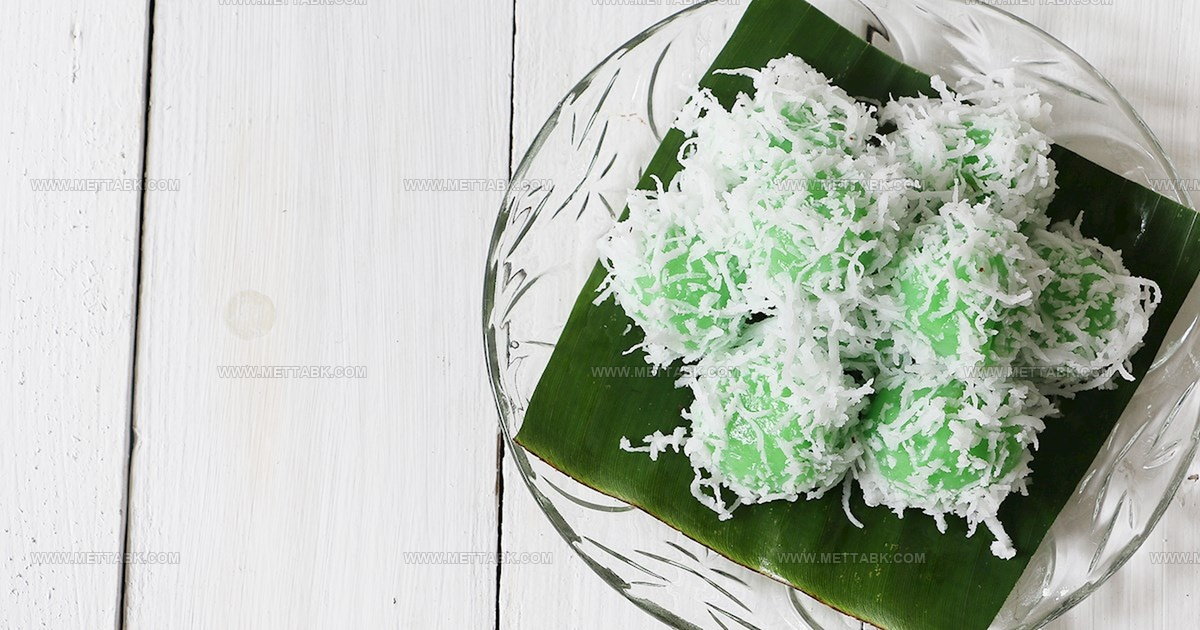
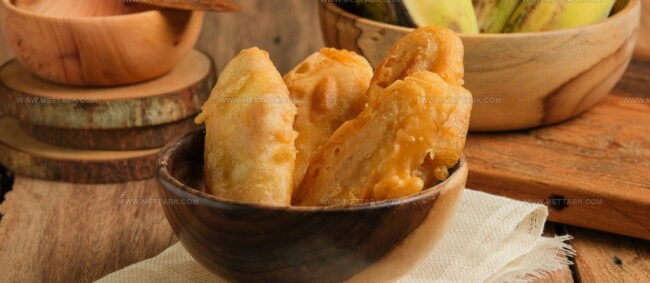
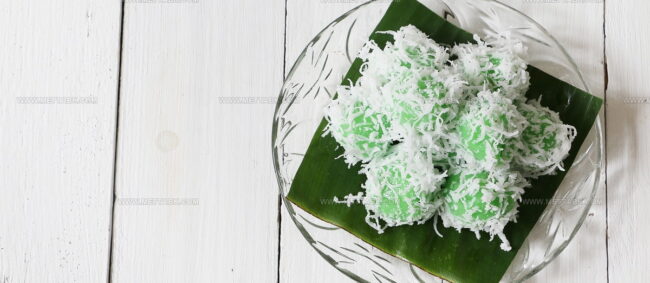
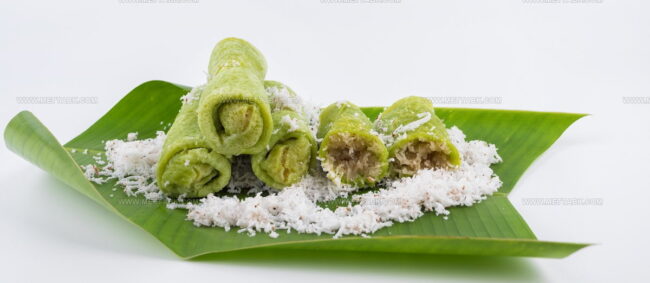
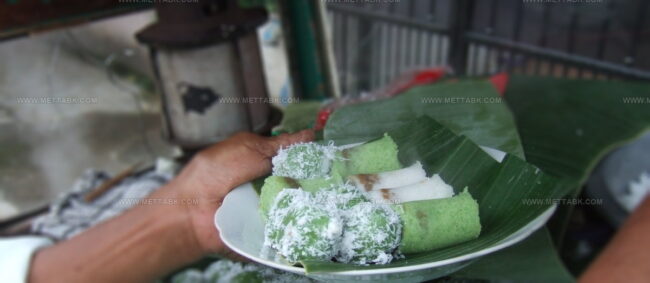
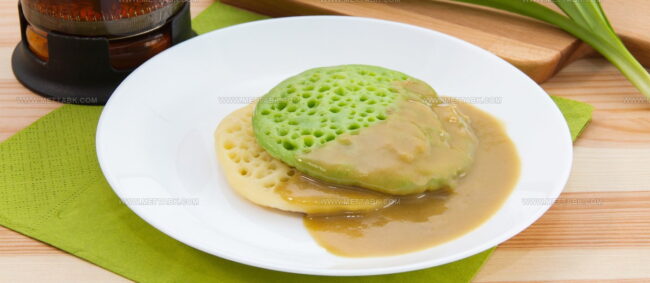

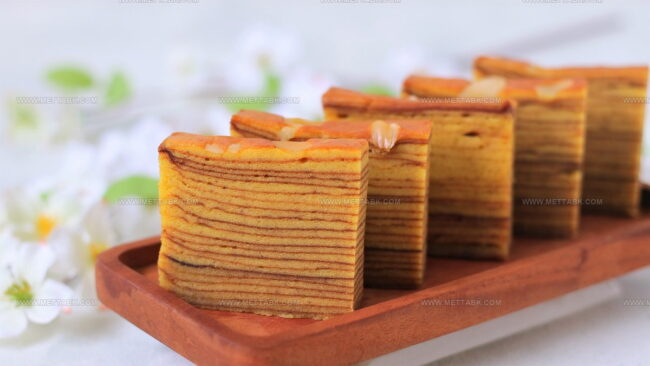
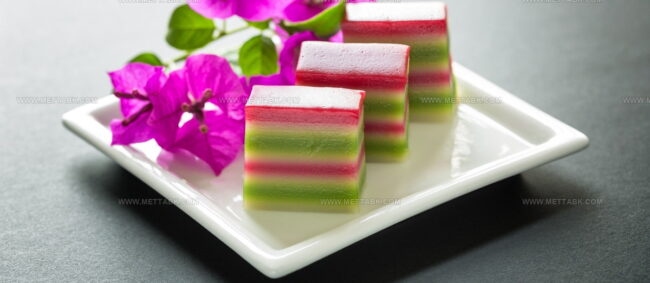
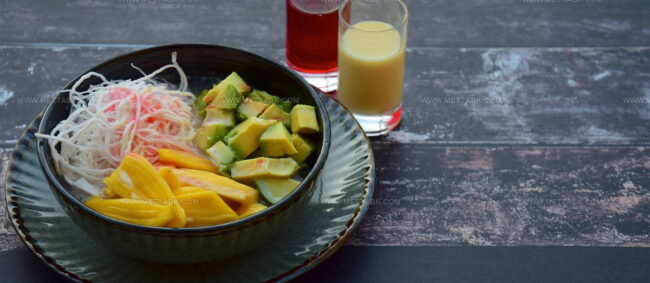
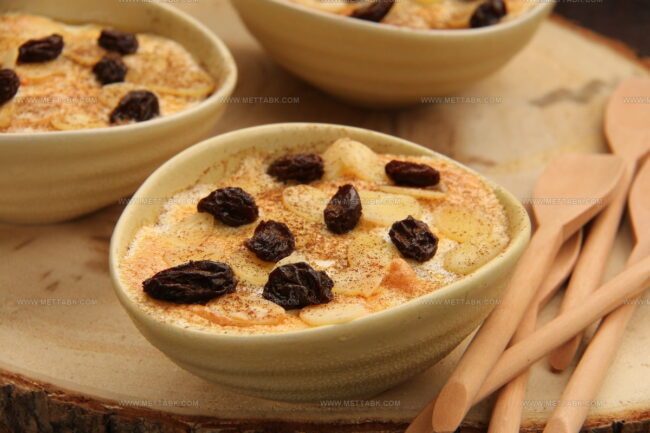

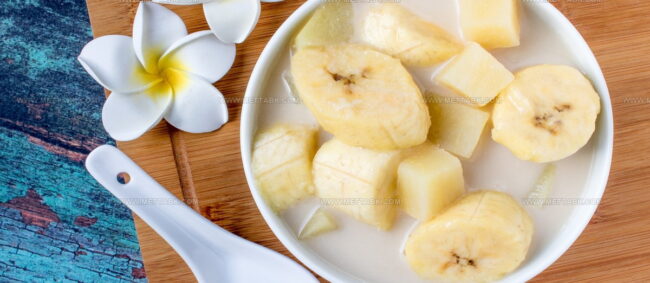
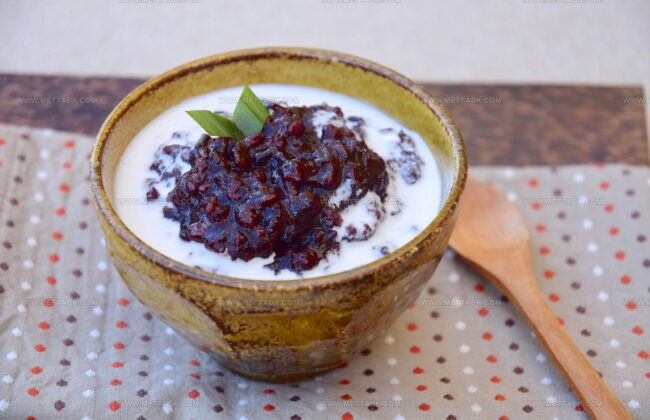
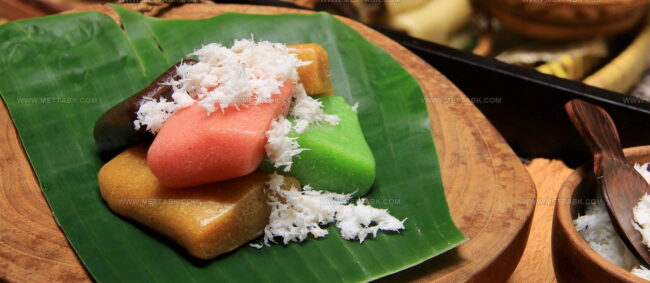
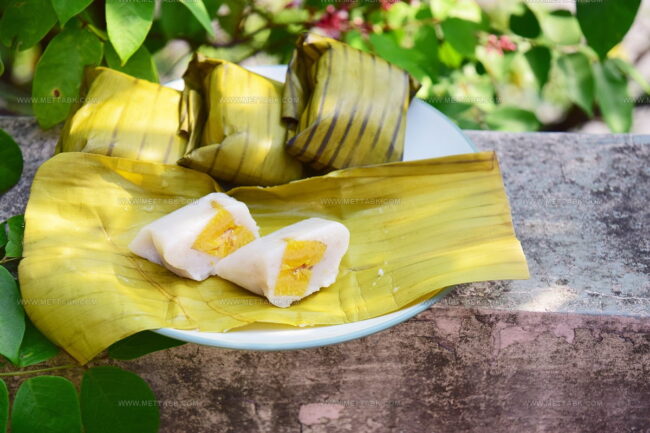
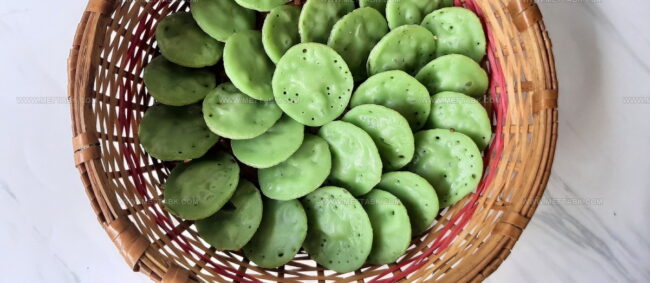
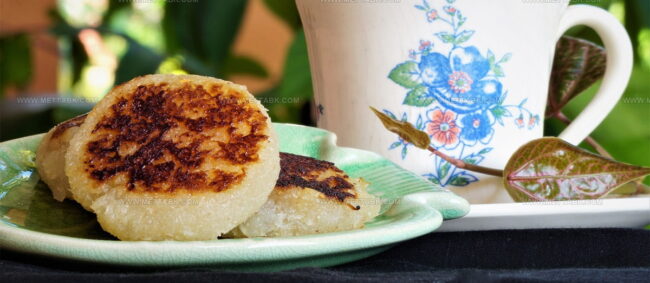

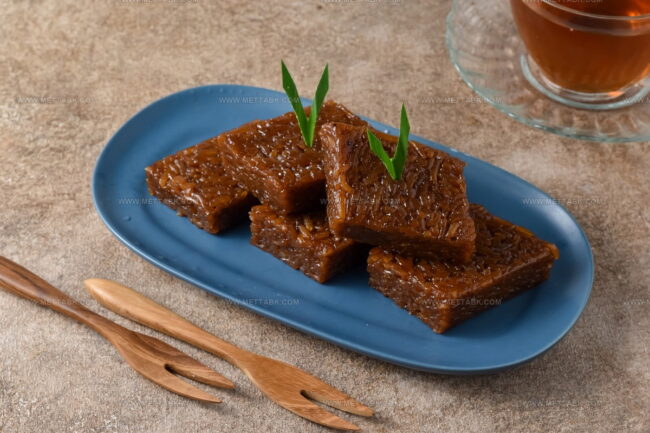
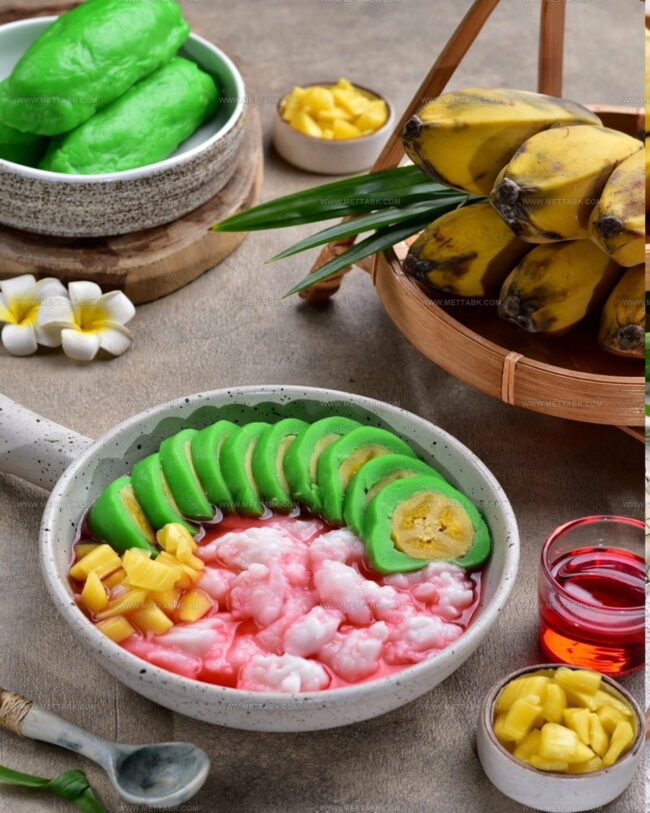
Clara Bennett
Contributing Recipe Developer & Food Writer
Expertise
Baking and Pastry Development, Gluten-Free and Allergy-Friendly Recipe Creation, Culinary Storytelling and Food Journalism, Recipe Testing and Standardization, Southern Comfort Foods and Modern Twists
Education
Sullivan University – National Center for Hospitality Studies
Associate Degree in Culinary Arts
Focus: Baking and Pastry Arts, Recipe Testing, and Culinary Journalism.
Clara specialized in crafting desserts that blend classic Southern comfort with modern techniques, while developing strong writing skills to tell the story behind every dish.
Lane Community College (Certificate Program)
Certificate in Food Writing and Photography
Focus: Culinary storytelling, recipe formatting, food styling, and visual presentation.
Clara’s love of baking started young, powered by homemade pies, biscuits, and stories passed around the family table.
After earning her degree at Sullivan University and a food writing certificate at Lane Community College, she turned her passion into a craft: sharing recipes that are simple, soulful, and always full of heart.
She’s big on bold flavors, flexible ideas, and creating sweets that fit any table (yes, even if you’re gluten-free). When she’s not baking, you’ll find her wandering farmers’ markets, styling food for the next photo shoot, or working on her ever-growing recipe journal.